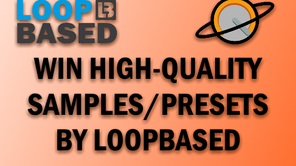How To Get A Clean And Firm Bass
- SUMANO
- 5 jan 2016
- 3 minuten om te lezen

It’s undoubtedly one of the most important parts of music production nowadays: having a rocking bottom-end! But how do you achieve a bass-heavy mix without clashing bass elements? ProducerPoint.com explains it to you.
Tune your kick (and lower percussion)
It may not seem worth the hassle, but it makes a big difference! Analyze the tonality of your kick, then tune it to the right key. If you’re time-stretching a sample, make sure that it doesn’t lose its punch, and if necessary, add a top kick.
Use different basses, and EQ them.
‘Bass’ is a widely used term. It can range from the sub basses to multiple hundreds of Hertz. Instead of having one bass sound to fill up this entire spectrum, it gives you a lot more control if you use a separate sub bass and top basses. Important: polyphony (playing multiple notes) doesn’t sound well in the lower registers, so let all bass instruments play the same melody.
Once you got this all set up; it probably sounds like sh*t. This can be because the frequency ranges of the bass sounds overlap each other too much. Using an equalizer, you can cut unnecessary frequencies. This will make your sound cleaner. Example:
Sub bass: 20 to 100 Hz Lower bass: 100 to 200 Hz Sidearp or higher frequency content that plays along with the bass: 200 Hz to 800 Hz.
Tip: avoid using very steep slopes since this will make it sound less natural.
More equalizing
Solo your kick and sub bass and open an equalizer on both channels. When you play them together, they will (most likely) clash and give you a messy sound. You can (partly) avoid this by cutting the frequency in the sub that are the most important in the kick drum, and the other way around. Using a plugin like Voxengo SPAN (from our list of best analyzing freeware), you can find out which frequencies are most important in an audio signal.
Even more equalizing: 100 Hz range
There is something special about the 100 Hz range: this is the range that gives you that energetic feeling in your chest when you listen to it on higher volumes. Especially for club music, it is important that either the (sub) bass or the kick drum is rich in the 100 Hz range (but not both!): this will give you that ‘up and down’ feeling. To achieve this, simply make (on the 100 Hz range) a few dB cut on your bass, and a few dB boost on your kick drum. For genres such as Melbourne bounce, you can consider to do this the other way around, since the offbeat bass can be more important than the kick.
Sidechain compression/ducking
To avoid frequency clashing and for optimal punchiness of your kick, you can use sidechain compression. It basically means that, whenever the kick plays, the sub bass, top bass or other sounds temporarily lower in volume so the kick is better hearable.
There are two ways to do this:
‘Real’ sidechain compression. A compressor placed on the bass channel ‘reads’ the volume of the kick drum, then lowers the volume of the bass when the signal exceeds the threshold. Pros: useful when you don’t have a 4x4 kick; you look really pro. Cons: takes more time to set up than the next technique; less customizable.
Automation You can use this technique by either drawing an automation clip that ducks and then rises, or using a plugin like Image-Line Grossbeat, Nicky Romero/Cableguys Kickstart or Cableguys VolumeShaper. It’s essentially automation that mutes the track at a given point. Pros: takes a little time to set up; very customizable. Cons: takes more time to set up for non 4x4 kicks.
Remove the stereo information
Bass sound is omnidirectional, which means that it doesn’t really matter which side it’s coming from. Therefore, you should keep everything up to somewhere around 200 Hz mono. Use a mid/side equalizer (like the Fabfilter Pro-Q 2) or a dedicated plugin (like TP-Basslane) to achieve this. It’s no problem if the higher bass frequencies are stereo, by the way.
Test it on different systems
Especially when you’re working in an untreated room, hearing low bass tones is hard. It may help to listen to your mix on different systems; like headphones, earbuds, or (for the less lazy people) your car system.
I hope this article helped you to improve the bottom-end of your mixes. If you have any questions, send us a message. To receive more music production tips and news, like our Facebook page and subscribe to our newsletter.












































Opmerkingen